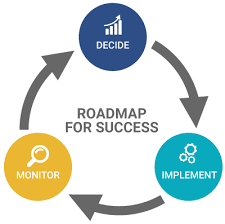Introduction
In today’s rapidly changing educational landscape, schools must continuously strive for improvement and growth. Effective target setting is a critical component of school improvement, providing a roadmap for success and ensuring that all members of the school community are working towards shared goals. In this article, we will discuss the importance of effective target setting and explore strategies for implementing it within a school context.
The Importance of Target Setting
Setting clear, achievable goals is essential for any organization seeking to improve performance. For schools, effective targets establish a framework for growth and act as a compass by which progress can be measured. By defining explicit objectives, schools can focus resources and effort on priority areas, ultimately driving improvement across all aspects of teaching and learning.
Key Elements of Effective Target Setting
1. Data-driven decision making: To set meaningful targets, schools must begin by analyzing their current performance through the lens of quantitative and qualitative data. This evidence-based approach allows administrators and teachers to identify specific areas where improvement is needed and establish goals that are both realistic and ambitious.
2. Collaboration and stakeholder involvement: Engaging all members of the school community in the target-setting process is crucial to achieving lasting change. Teachers, support staff, parents, students, and other stakeholders should be invited to participate in discussions concerning school improvement priorities. This collaborative approach fosters ownership of the objectives and increases the likelihood of successful implementation.
3. Alignment with broader goals: It’s important that individual targets align with larger strategic objectives set forth by the school or district. This ensures that target setting serves as a building block towards broader institutional aspirations, rather than an isolated exercise detached from real-world impact.
4. Specificity and measurability: Effective targets are clear, specific, and measurable. Ambiguous goals can be difficult to action or monitor progress against, whereas precise objectives allow for effective evaluation and review.
5. Regular monitoring and review: Targets should be periodically revisited and adjusted as needed to reflect evolving circumstances or new information. This ongoing monitoring allows schools to recognize achievements and maintain momentum towards improvement.
Strategies for Implementing Target Setting in Schools
1. Establish a school improvement team: Creating a dedicated team responsible for driving the target-setting process can help ensure that it is taken seriously, gains traction within the school community, and is provided with adequate resources.
2. Engage in professional development: Teachers and administrators may benefit from targeted training on effective target setting methods, data analysis techniques, and best practices for implementing school improvement initiatives.
3. Communicate targets clearly: Once goals have been set, they should be communicated to all stakeholders in an accessible and transparent manner. This allows for shared understanding and provides a benchmark against which progress can be measured.
4. Celebrate success and learn from setbacks: As targets are met, it’s important to celebrate accomplishments and recognize the effort of those involved. However, when setbacks occur, they should be viewed as an opportunity to reflect, learn from mistakes, and refine strategies moving forward.
Conclusion
Effective target setting lies at the core of successful school improvement efforts. By utilizing evidence-based decision making, engaging stakeholders, aligning with broader objectives, maintaining specificity and measurability, and conducting continuous monitoring and review, schools can create a robust framework for growth and transformation. Implementing these strategies will pave the way towards improved educational outcomes for all students.




